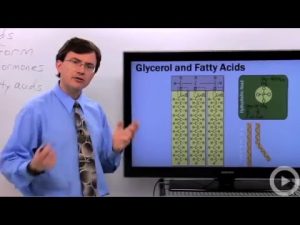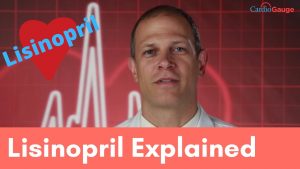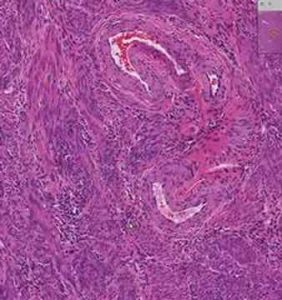We specialize in creating all kinds of animated and live shoot videos and similar content. If you are in need of such videos, please contact us at : Website : www.magicspangle.in Email: [email protected] Phone : +91 9315138620 About this video: Did you know that your heart pumps blood to 75 trillions cells of your body? Your heart beats about 100,000 times each day pumping blood throughout your body via the circulatory system, supplying oxygen and nutrients to the tissues, and removing carbon dioxide and other wastes. The human heart is roughly the size of a large fist and is located just behind and slightly left of your breast. Anatomy Your heart is divided into four chambers: two upper chambers i.e the atria and two lower chambers called the ventricles. A wall of muscle called the septum divides your heart. A double-walled sac called the pericardium encases the heart. The atria receive blood returning from your body through the veins and the ventricles pump blood to your body through arteries. Various valves control the flow of blood from one chamber of the heart to another. A healthy heart means that the right amount of blood is flowing in all of the four quadrants. The human heart does the most amount of work during our lifetime and as such, it is extremely important to keep our heart healthy and prevent heart diseases. Heart Disease Heart disease can function and progress in a number of different ways depending on the cause. Heart diseases generally begin with damage to the lining and inner layers of your heart arteries. Plaque buildup thickens and stiffens artery walls which inhibit blood flow to your organs and tissues. Over time, plaque can harden or break open. Hardened plaque narrows the coronary arteries and reduces the flow of oxygen-rich blood to the heart. This can cause chest pain or discomfort called angina. If the plaque ruptures, blood cell fragments called platelets stick to the site of the injury. They may clump together to form blood clots. Blood clots can further narrow the coronary arteries and worsen angina. If a clot becomes large enough, it can mostly or completely block a coronary artery and cause a heart attack. Arterial Blockage and Heart Attack An arterial blockage is ultimately the build-up of plaque within the artery. This build-up inevitably affects the blood flow, bringing with it a number of symptoms that can vary, depending on the area in which the blockage has formed.  With the word “attack” in the phrase, most people think heart attacks grab hold suddenly, felling them with little warning. Not so. Many heart attacks come on gradually, without intense pain and sometimes with symptoms that come and go. The signs of a heart attack can be confusing enough that you don’t suspect a heart problem. This is true even if you have had a heart attack before, because the symptoms can vary from one attack to another. Heart Attack can be fatal if not treated at the earliest but it can be prevented with the help of proper diagnosis and preventive measures.

Human Heart Anatomy I 3D Animation by Magic Spangle Studios
- Post author:
- Post published:May 24, 2021
- Post comments:0 Comments
You Might Also Like

Abscess Basics: Part 2a

DEXA – Dual Energy X-Ray Absorptiometry

Acne Pimples Nutrition Video – 2

SIDE EFFECTS OF WHEY PROTEIN

Lipid

Body Composition Analysis

quadriceps strengthening exercises Quadricep drill static

Light Weights vs Heavy Weights for Muscle Growth

Leg Extension-6

Diazepam – Do’s and don’ts | Drugslab

GLUCAGON

Lisinopril Explained.: Uses and Side Effects.

Is Using Viagra Cialis or Levitra for Erectile Dysfunction Safe
![Read more about the article 100 Running In Place Challenge [At Home Cardio & Weight Loss]](https://videos.drmaheshkumar.com/wp-content/uploads/2021/05/100-Running-In-Place-Challenge-At-Home-Cardio-Weight-Loss-300x169.jpg)
100 Running In Place Challenge [At Home Cardio & Weight Loss]

Insulin vs Glucagon

Post Operative Nutrition Video – 2

What Is Kidney Dialysis?

How to Pistol Squat – 4 Beginner Progression Steps – Tapp Brothers

What Is a Normal Blood Sugar Level? | Dr.Berg

Medication Onset of Action & Peak Effect

Best Omega-3 Supplements | Ancient Nutrition

GCSE Science Revision Biology “Control of Blood Glucose Concentration”

Celebrity body types- who has your body shape?

Incline Bench Press-3

Muscle Building Workout & Squats Video – 21

How to increase your testosterone levels

Health Check: Full Blood Count

Single Arm Tricep Extension – Quick Exercise Demo

7 MIN STRETCHING EXERCISES AFTER WORKOUT ( New) | FULL BODY COOL DOWN FOR RELAXATION & FLEXIBILITY

Sports Physiotherapy Video – 10

Barbell Bent Over Row

How To Build Big Biceps / Guns / Arms – Buff Dudes

Evolutionary Psychology Video – 2

Fat Cutter Drink / Lose Belly Fat in 5 Days /Weight Loss Drink Remedy

High pulley overhead triceps extension Tutorial

What Causes Diabetes?

Of Anatomy and Physiology (2013 – 3D Animation)

Shotgun Histology Uterus

Barbell Decline Bench Press – HASfit Lower Chest Exercise Demonstration – Decline Press – Pectoral

My New Supplement Stack (Using India’s Cheapest Whey Protein)

Best Cardio Exercises: High Knees Running In Place

